#AskYourRaceDirector: The De-acceleration Zone
It takes a great deal of planning and experience in executing the perfect race course and things that go into making it a smooth run have been meticulously taken care of. One of the most important aspects of a marathon is the path provided for the run. The start to finish route has to satisfy a runners expectation and beyond. However, it is not just the finish line where a race design is complete. The provisions provided once a runner crosses the finish line make as much of a difference as the route itself does. The following blog covers all the questions when it comes to ensuring the perfect post-running experience.
In race design, various aspects of the running route have to be given due care so that runner safety and experience is not compromised. In most runs, one can see the least amount of care given to the de-acceleration zone. In fact, if there is one zone that needs the maximum attention, it is probably this zone. Let’s understand what a de-acceleration zone is and why it is most important in race planning.
What is a De-acceleration Zone?
The de-acceleration zone is a zone after the finish line, where the runner who has sprinted to the finish line, de-accelerates and comes to a slow halt.
What is the single important feature of the de-acceleration zone?
It is very much necessary from a design perspective that the de-acceleration zone is not crowded at all. This is because when runners see a crowd after the finish timing mat, they will not sprint as fast to the finish because they will fear running into the crowd waiting for them after the timing mats. So the de-acceleration zone should be kept as clear as possible.
What should be in the de-acceleration zone?
There should be only two items in the de-acceleration zone. One is water and the second is medical attention. The importance of this cannot be stressed enough. It is well known that most deaths happen after the finish line. The runner who died in a race in Mumbai, died in the de-acceleration zone. It was too crowded for anybody to know what was happening to him.
This is the time when his heart rate has peaked and he has given his all out on top of a long steady aerobic threshold creeping in, endurance run out, and he has sprinted to the finish going well beyond his maximum heart rate. This a time when a whole host of things can strike him. Postural Hypertension (low blood pressure) and thus fainting, though common, is the least of the worries. More serious are cardiac issues and hypoglycaemia, which can often be fatal. A medical team is necessary to monitor every single finisher and ensure that appear to be okay visually and reach out to those who seem to be struggling.
The next thing required is water because most runners will not stop to hydrate as they do not want to waste a single second. So as soon as they finish, they need to rehydrate and water should be provided to them. Besides this, there should be nothing else in the de-acceleration zone.
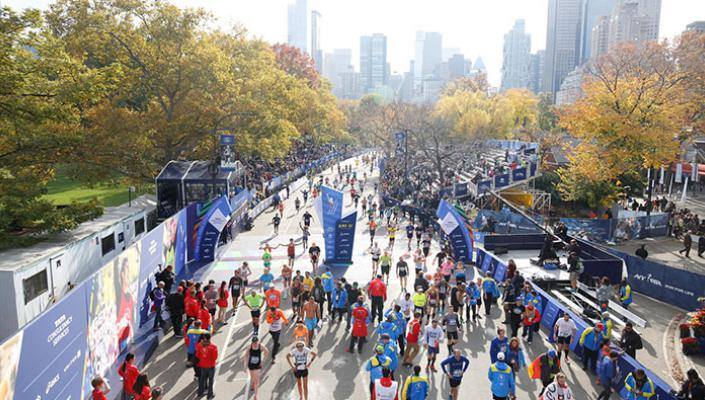
There are two finish zones. The officials are either lined on the sides or in the leeward sides of the finish signage posts.
The medical team ( red teeshirts ) are in the area monitoring the arrivals. The blue jackets are race officials and are not blocking the arrivals.
What are the things that normally crowd the de-acceleration zone?
We have seen all kinds of things that crowd the de-acceleration zone. RJ of the local radio station, the post-finish selfie zone as well as the spectators waiting for their running buddies to come in.
Photographers think they are Gods gift to runners and stand square and in front of the runners coming in fast. Athletic officials are another in the same mould. Then there are the sponsors, coaches and event volunteers. Lastly, it’s the runners who finished and are waiting for their running partners to come through.
Photographers and Athletic timing officials need to be there and should be told to stand on the sides and do their work. Sponsors will come to hold the finishers tape etc. and after the job is done should be told to move on to the VIP zone. Often enough, they are happy doing that.
The runners who finish should be requested to clear the place as soon as they have composed themselves. Often creating a building design that influences such behaviour is desirable.
How much distance should the de-acceleration zone be?
How much length the de-acceleration zone must be, will depend largely upon the numbers of runners arriving in the middle pack bulge. The arrival rate of the middle pack has to be estimated and that is the peak volume that has to be provided for. Paradoxically enough, this is also often the population that will have medical issues. A 2-3 minute recovery – ‘selfie at the finish line’ – time has to be provided for. So the de-acceleration zone has to be large enough for those estimated numbers. A good rule of thumb is ten to fifteen square feet per runner arriving in the zone.
What are some of the best practises in the de-acceleration zone?
We feel that the de-acceleration zone is a defining moment for the runner. This is where he celebrates the thrill of the run, this is his moment of glory. This is where a positive image and final memory of the run is formed in the mind. This is what he trains for, and pays for. We cannot have a situation where the thrill of a strong finish is denied to him. Until the last runner comes in.
P.S: The #AskYourRaceDirector series is intended to educate and improve the level of technical sophistication of the running community, so that races in future are judged by how technically well the event is designed.

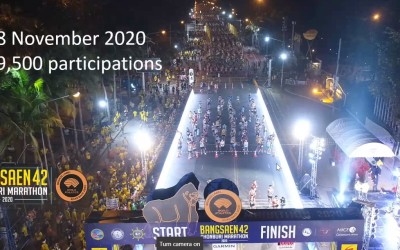
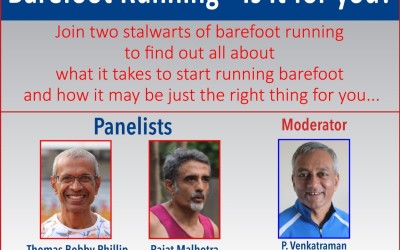
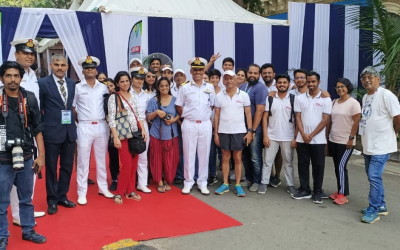
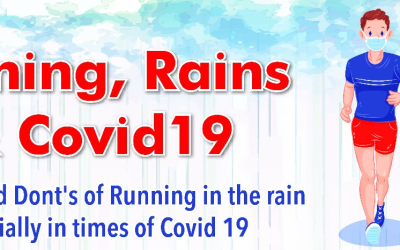
Leave a Reply